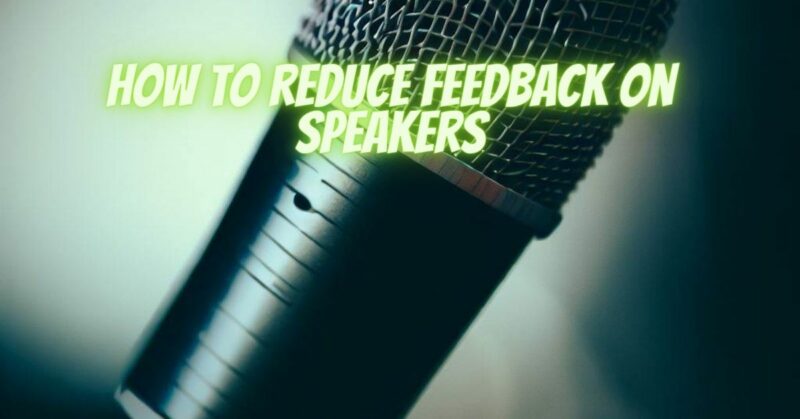Feedback is the dreaded screeching or howling sound that occurs when sound from a speaker loops back into a microphone, creating a frustrating and disruptive experience. Whether you’re setting up a live performance, hosting an event, or even using a PA system at home, feedback can quickly ruin the audio quality. In this article, we’ll explore effective techniques and strategies to help you minimize and eliminate feedback on your speakers, ensuring a seamless and enjoyable listening experience for both you and your audience.
- Understanding the Causes of Feedback: Gain a comprehensive understanding of the factors that contribute to feedback. We’ll delve into concepts such as the proximity effect, microphone placement, gain staging, and room acoustics. By understanding these fundamental principles, you’ll be better equipped to address and prevent feedback issues.
- Optimizing Speaker Placement: Learn how to strategically position your speakers to minimize the potential for feedback. We’ll discuss the importance of speaker angles, distance from microphones, and avoiding reflective surfaces. Discover techniques for directing sound away from microphones and optimizing coverage while reducing the risk of feedback.
- Proper Microphone Technique: Explore microphone techniques that can help reduce feedback. We’ll cover microphone placement, polar patterns, and using techniques such as the “microphone cupping” method to minimize the risk of feedback. Understanding how different microphones respond to sound can greatly impact feedback control.
- EQ and Feedback Suppression: Discover how equalization (EQ) can be used to tame feedback. We’ll discuss techniques such as notch filtering and parametric EQ adjustments to specifically target and attenuate problem frequencies. Explore feedback suppression devices and digital signal processors (DSPs) that can automatically detect and suppress feedback in real-time.
- Gain Staging and Signal Chain Management: Learn how to properly set gain levels throughout your audio system to prevent feedback. We’ll discuss gain staging techniques, preamp adjustments, and the importance of maintaining a healthy signal-to-noise ratio. Proper signal chain management can significantly reduce the risk of feedback.
- Room Acoustics and Sound Treatment: Examine the impact of room acoustics on feedback. We’ll explore the importance of sound absorption, diffusion, and room layout in minimizing reflections and standing waves that can contribute to feedback issues. Discover practical tips for sound treatment and optimizing your listening environment.
- Feedback Monitoring and Troubleshooting: Develop effective monitoring techniques to detect and address feedback in real-time. We’ll discuss the importance of sound checks, monitoring systems, and trained ears to identify and resolve feedback issues promptly. Troubleshooting steps for common feedback scenarios will also be covered.
Conclusion:
Feedback can be a persistent challenge, but with the techniques and strategies outlined in this article, you can regain control over your audio system and enjoy clean, high-quality sound without the nuisance of feedback. By understanding the causes of feedback, optimizing speaker placement, employing proper microphone techniques, utilizing EQ and feedback suppression tools, managing gain staging, addressing room acoustics, and implementing effective monitoring, you’ll be well-equipped to minimize and prevent feedback on your speakers. Prepare for an immersive and uninterrupted audio experience, leaving feedback woes behind as you enjoy crystal-clear sound in any setting.


